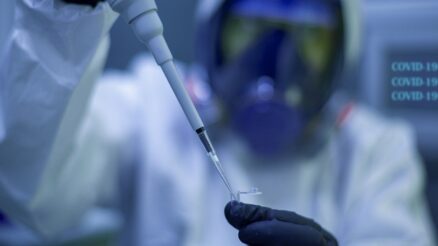Have you ever wondered why so many people are buzzing about non-toxic dental materials? If you’re curious like I was, you’re in the right place. Let’s look into the marvelous innovation of safer and healthier dental options and see why making the switch to non-toxic materials can be super beneficial for you and your family.
Why Non-Toxic Materials Matter
First things first, understanding why non-toxic materials are important is key. Traditional dental materials often contain substances like mercury, BPA, and various metals that might pose long-term health risks. Non-toxic materials are crafted to minimize these risks, promoting overall health and well-being. But that’s just scratching the surface.
1. Better Overall Health
Imagine a world where the materials in your dental work contribute to your overall health rather than detract from it. That’s precisely what non-toxic dental materials offer. By reducing exposure to harmful substances, you’re less likely to encounter related health issues.
2. Reduced Allergic Reactions
Common Allergens in Dental Materials
Traditional materials can trigger allergies in some people. Non-toxic alternatives, often made from hypoallergenic substances, significantly reduce the chances of adverse reactions, making them safer for everyone, especially those with sensitivities.
-
Mercury in amalgam fillings
-
BPA in composites
-
Nickel in metal braces
3. Environmental Impact
Believe it or not, your choice of dental materials can impact the environment. Non-toxic options tend to be more eco-friendly, reducing the overall harm to our planet. So, you’re not only taking care of yourself but also doing a little good for Mother Earth.
Aesthetic Benefits of Non-Toxic Dental Materials
Who doesn’t want a dazzling smile? Non-toxic dental materials often provide better aesthetic results. They can be designed to mimic the natural appearance of your teeth, providing a seamless, beautiful finish.
4. Natural-Looking Work
Traditional materials like metal fillings can be quite noticeable. In contrast, non-toxic materials such as ceramic or composite resins can be color-matched to your teeth, giving a more natural and discreet appearance.
5. Durability and Strength
Choosing non-toxic means compromising on durability. However, that’s not the case. Non-toxic dental materials like zirconia teeth implants are incredibly strong and durable, often outlasting their traditional counterparts.
Cost-Effectiveness in the Long Run
While the initial cost of non-toxic dental materials might be higher, they often prove to be more cost-effective in the long run. Here’s why:
6. Fewer Replacements
Non-toxic materials are generally more durable and less prone to wear and tear. This means fewer replacements and repairs over time.
7. Lower Medical Expenses
By minimizing allergic reactions and reducing exposure to harmful substances, non-toxic dental materials can help keep medical expenses down. Fewer health complications mean fewer trips to the doctor.
Better Compatibility with Your Body
8. Biocompatibility Explained
Biocompatibility refers to how well a material works with the body’s natural systems. Non-toxic dental materials are designed to be biocompatible, reducing the risk of adverse reactions and promoting faster healing.
9. Healing and Recovery
Using biocompatible materials can lead to quicker recovery times after dental procedures. This means less discomfort and a faster return to your normal activities.
Safe for All Ages
Non-toxic dental materials are safe for patients of all ages, from toddlers to grandparents. Their safety profile makes them an excellent choice for the whole family.
10. Pediatric Dentistry
For kids, minimizing exposure to potentially harmful substances is crucial. Non-toxic fillings and sealants can provide effective treatment without the risks associated with traditional materials.
11. Geriatric Dentistry
Older adults often face unique dental challenges. Non-toxic materials can offer a safer, longer-lasting solution to dental issues, ensuring better overall health and quality of life.
Holistic Dental Practices
Non-toxic dental materials align well with holistic dental practices, which focus on treating the patient as a whole rather than just addressing symptoms. This approach often leads to better overall health outcomes.
12. Integrative Approach
Holistic dentists often use non-toxic materials in conjunction with other natural treatments to promote overall wellness. This integrative approach can be very effective in maintaining dental and general health.
13. Chemical-Free Living
Choosing non-toxic materials is part of a broader movement towards reducing chemical exposure in daily life. This shift can lead to significant health benefits and a cleaner environment.
Future Trends in Dental Materials
14. Innovation in Dentistry
The dental industry is continually evolving, with ongoing research into safer and more effective materials. Innovations like their metal free dental services are already making a mark, setting new standards for safety and efficacy.
15. Patient-Centered Care
The trend towards non-toxic materials reflects a broader shift in healthcare towards patient-centered care. This approach considers the long-term well-being of patients, leading to more personalized and effective treatments.
How to Make the Switch
Consult Your Dentist
If you’re considering switching to non-toxic dental materials, the first step is to talk to your dentist. They can provide valuable insights and recommendations tailored to your specific needs.
Research and Recommendations
Look into different non-toxic options and read up on patient reviews and expert opinions. Sometimes, by visiting helpful resources, you can see their website gather a wealth of information on safe dental practices.
Insurance and Costs
Check if your dental insurance covers non-toxic materials and treatments. While they might be slightly pricier upfront, they can be more cost-effective over time.
Final Thoughts
Switching to non-toxic dental materials is a wise choice for your health, the environment, and your wallet. From reducing allergic reactions to providing better aesthetic results, the benefits are numerous. So, why not take that step towards safer and healthier dental care? Your body, your family, and the planet will thank you.



